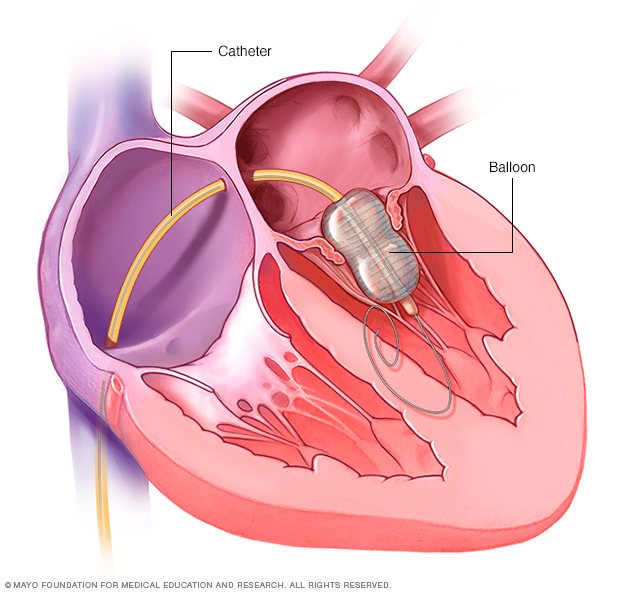Valvuloplasty
![]() November, 20th, 2024
November, 20th, 2024
Summary
Find out more about this cardiac catheter procedure to repair a narrowed heart valve.
Overview
, Overview, ,
A valvuloplasty is a treatment to repair a heart valve that has a narrowed opening. Narrowing of a heart valve is called valve stenosis.
Four heart valves — the aortic, mitral, tricuspid and pulmonary valves — open and close to let blood flow through the heart. In a narrowed heart valve, the valve flaps, also called leaflets, may become thick or stiff and fuse together. Valve stenosis reduces blood flow through the valve.
A valvuloplasty may improve blood flow through the heart valve. It also may improve symptoms of heart valve disease, such as shortness of breath or chest pain.
Valvuloplasty also may be called:
- Balloon valvuloplasty.
- Balloon valvotomy.
- Percutaneous balloon valvuloplasty.
Why it’s done
Valvuloplasty is done to repair a narrowed heart valve, also called valve stenosis. It may be done to treat:
- Aortic valve stenosis.
- Mitral valve stenosis.
- Pulmonary valve stenosis, also called pulmonic stenosis.
- Tricuspid valve stenosis.
Untreated, some types of heart valve stenosis can lead to complications, including irregular heartbeats and heart failure.
Talk to a healthcare professional to decide whether valvuloplasty or another treatment is best for you. Valvuloplasty may be suggested if you have severe valve narrowing that’s causing symptoms. But some people with heart valve disease need valvuloplasty even if the condition isn’t severe or when it’s not causing symptoms.
The decision to have a valvuloplasty also may depend on the valve affected. For example, the aortic valve tends to narrow again in adults who’ve had a valvuloplasty. So the treatment is usually done if you’re too sick for surgery or are waiting for a valve replacement.
What you can expect
Valvuloplasty is done in the hospital, usually while you’re awake. A medicine called a sedative may be used to help you relax.
Valvuloplasty is done during a procedure called cardiac catheterization. The doctor places a thin, flexible tube called catheter into a blood vessel, usually in the groin. The catheter is carefully guided to the narrowed valve in the heart. Once in position, a balloon on the tip of the catheter is inflated to widen the valve opening. This improves blood flow. The balloon is deflated. The catheter is removed.
A valvuloplasty usually requires an overnight hospital stay. Regular health checkups and imaging tests of the heart are needed after valvuloplasty to make sure the heart valve is working properly.
Valvuloplasty may improve blood flow through the heart and reduce symptoms. But the valve may narrow again. Another valvuloplasty or heart valve treatment may be needed in the future.

In balloon valvuloplasty, a catheter is inserted in the heart and guided to the narrowed valve. The balloon is then inflated, which expands the opening of the valve.
, Balloon valvuloplasty,
© 1998-2025 Mayo Foundation for Medical Education and Research (MFMER). All rights reserved. Terms of Use



